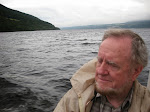Far-fetched scenario #1 (Oct. 14, 2024)
When Quebec’s Charest government tabled a bill for a Proportional
Representation system for Quebec in 2004, after going through their caucus it
featured little 5-MNA regions – 3 local MLAs, and 2 regional MNAs for top-up
seats.
There was an all party-consensus for PR in Quebec since the
2003 election. But after public hearings and negative reaction to this model,
the Select Committee of the National Assembly recommended in April 2006 that the
model be changed to better reflect Quebec’s political diversity. More
proportional, that is, with larger regions. But the Quebec Liberal caucus were
not too happy with more diverse MLAs. The model went back to the drawing
boards, where it stayed. For years, up to the Liberal defeat in 2012, the government’s
Minister for Democratic Reform kept saying the government was still committed
to PR, the problem was the model.
When Justin Trudeau was first nominated in 2007 and elected
as an MP in 2008, the only discussion of PR among Liberals in Quebec was at the
provincial level, where the issue was the size of the regions.
In the 2006 Liberal leadership race Justin Trudeau had
supported Stephane Dion on the final ballot. In April 2012 Stephane Dion
proposed a “moderate PR” model with five-seat regions called “P3.”
In January 2013 Justin Trudeau was running for the Liberal
leadership, and stopped in Port Hope, where I got the chance for a brief chat.
I asked him to support the report of the Law Commission of Canada (2004). He
seemed not very familiar with it, and asked “how big are the regions?” I gave
him an honest answer: “in the range of 8 to 14.” I wonder what he would have
said if I had answered “could be as small as five.” But he rejected my answer,
and said he could not support that.
Fast-forward to today. The Liberals face a wipeout by the
Conservatives even if they win only 40% of the vote. Justin Trudeau is still
talking of the ranked ballot as the way to prevent this, but the NDP will never
support a system which usually favours no party but the Liberals.
A historic compromise
Now, suppose a Liberal leader (either Justin Trudeau or a
successor) proposes a historic compromise: an agreement with the NDP for immediate
adoption of two bills. The first will implement a ranked ballot for the next
election, but only for one election. The second bill will implement a moderate
proportional system, a mixed-member proportional model with five-MP regions –
the Charest 2004 model. (It also had a few 3-MP regions and a few 7-MP regions). The
government would immediately appoint Boundaries Commission for each province to
group the ridings used this year into regions of an average of five MPs, to
be used for the new system in the next election after this year. Elections
Canada would want seven months to implement the new PR system; they would have
it.
This presupposes that the 2025 election would, with ranked
ballots, produce a Liberal-NDP alliance to last until implementation of the new
system. On current polls, I think it would.
The Charest model
How bad would it be? It would not give representation to
Canada’s full diversity. The fourth party in a region would seldom win a seat,
such as the NDP in Quebec, the Greens, and the Peoples Party.
But it would accomplish the major objectives of proportional
representation: 1) that no government should have a false majority with only
40% or 42% support; and 2) that partisan regional disparities should be prevented.
So as an exercise I have done a projection of the 2021 vote on the new boundaries using the Charest model, with 70 small regions, plus 3 remote single seats, total 207 local seats and 136 top-up, with regions of (average) 4.75 seats. Liberal voters in Alberta would elect 5 MPs (3 more, such as Sabrina Grover and Murray Sigler in Calgary, and Ben Henderson in Edmonton). Saskatchewan Liberals would elect two MPs, such as Buckley Belanger and Sean McEachern. BC Interior Liberals would elect 2 MPs, such as Tim Krupa from Kelowna and Jesse McCormick from Kamloops. Vancouver Island Liberals would elect an MP such as Victoria’s Dr. Nikki Macdonald.
Westman Liberal voters would
have elected an MP such as Shirley Robinson. In Ontario, West-Central Ontario Liberals
would have elected a second MP such as Melanie Lang from Wellington County. Simcoe
County Liberals would have elected an MP like Cynthia Wesley-Esquimaux. East-Central
Ontario Liberals would have elected an MP such as Belleville’s Neil Ellis. Mid-East
Ontario Liberals would have elected another MP such as Frontenac’s Mike Bossio.
In Quebec, Liberal voters would have elected three more MPs in the regions such
as Terrebonne’s Eric Forget, Shefford’s Pierre Breton and Jonquière’s Stéphane
Bégin.
NDP voters would have elected 41 more MPs, including 7 more
in Alberta, 21 more in Ontario, 3 in Saskatchewan, 6 in Atlantic Canada, 2 in
BC (Sonia Andhi in Surrey Centre and Danielle (D J) Pohl in Chilliwack—Hope), and
even 4 in Quebec, but not the 8 they deserved in Quebec.
Green voters would had have added an MP: Anna
Keenan in PEI. And likely a handful more if their vote went up as I expect it would.
